
Thomas George Baring, 1st Earl of Northbrook, was a British Liberal statesman. Gladstone appointed him Governor-General of India 1872–1876. His major accomplishments came as an energetic reformer who was dedicated to upgrading the quality of government in the British Raj. He reduced taxes and overcame bureaucratic obstacles in an effort to reduce both starvation and widespread social unrest. He served as First Lord of the Admiralty between 1880 and 1885.

Bedford College was founded in London in 1849 as the first higher education college for women in the United Kingdom. In 1900, it became a constituent of the University of London. Having played a leading role in the advancement of women in higher education and public life in general, it became fully coeducational in the 1960s. In 1985, Bedford College merged with Royal Holloway College, another constituent of the University of London, to form Royal Holloway and Bedford New College. This remains the official name, but it is commonly called Royal Holloway, University of London (RHUL).

Mary Carpenter was an English educational and social reformer. The daughter of a Unitarian minister, she founded a ragged school and reformatories, bringing previously unavailable educational opportunities to poor children and young offenders in Bristol.

Sarah Emily Davies was an English feminist who founded Girton College, Cambridge. She campaigned as a suffragist and for women's rights to university education. In her early life, she attended meetings of the National Association for the Promotion of Social Science and befriended Barbara Bodichon and Elizabeth Garrett Anderson. After moving to London with her mother in 1862, she wrote for and edited the English Woman's Journal and joined the Langham Place Group. She co-founded the London Schoolmistresses' Association and the Kensington Society, which pressured for universal suffrage, although she herself believed only unmarried women and widows should gain the vote.
The London School of Medicine for Women (LSMW) established in 1874 was the first medical school in Britain to train women as doctors. The patrons, vice-presidents, and members of the committee that supported and helped found the London School of Medicine for Women wanted to provide educated women with the necessary facilities for learning and practicing midwifery and other branches of medicine while also promoting their future employment in the fields of midwifery and other fields of treatment for women and children.
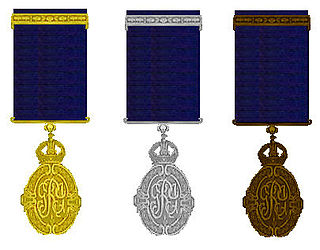
The Kaisar-i-Hind Medal for Public Service in India was a medal awarded by the Emperor/Empress of India between 1900 and 1947, to "any person without distinction of race, occupation, position, or sex ... who shall have distinguished himself by important and useful service in the advancement of the public interest in India."
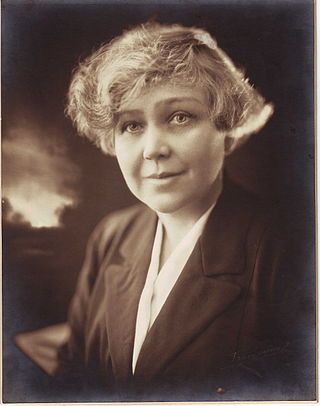
Helen Mary Mayo was an Australian medical doctor and medical educator, born and raised in Adelaide. In 1896, she enrolled at the University of Adelaide, where she studied medicine. After graduating, Mayo spent two years working in infant health in England, Ireland and British India. She returned to Adelaide in 1906, starting a private practice and taking up positions at the Adelaide Children's Hospital and Adelaide Hospital.

Cornelia Sorabji was an Indian lawyer, social reformer and writer. She was the first female graduate from Bombay University, and the first woman to study law at Oxford University. Returning to India after her studies at Oxford, Sorabji became involved in social and advisory work on behalf of the purdahnashins, women who were forbidden to communicate with the outside male world, but she was unable to defend them in court since, as a woman, she did not hold professional standing in the Indian legal system. Hoping to remedy this, Sorabji presented herself for the LLB examination of Bombay University in 1897 and the pleader's examination of Allahabad High Court in 1899. She became the first female advocate in India but would not be recognised as a barrister until the law which barred women from practising was changed in 1923.
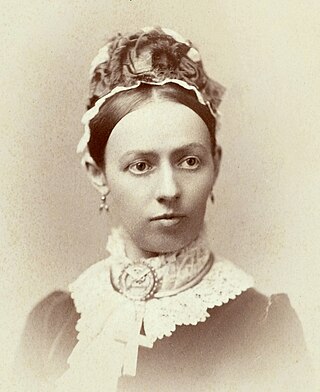
Dame Mary Ann Dacomb Scharlieb, DBE was a pioneer British female physician and gynaecologist in the late 19th/early 20th centuries. She had worked in India and by her persistence she returned to the UK to become a qualified doctor. She returned to Madras and eventually lectured in London. She was the first woman to be elected to the honorary visiting staff of a hospital in the UK and one of the most distinguished women in medicine of her generation.

Shasipada Banerjee was a teacher, social worker and leader of the Brahmo Samaj who is remembered as a champion of women's rights and education and as one of the earliest workers for labour welfare in India. He was the founder of several girls' schools, a widow's home, temperance societies, a workers' organisation and the editor of the journal Bharat Sramajibi.
The Victoria League for Commonwealth Friendship (1901–present) is a voluntary charitable organisation that connects people from Commonwealth countries. There are currently branches in the UK, Australia, and New Zealand with affiliated organisations in Canada and the USA. It is headquartered in Bayswater, London, United Kingdom.

Mary Poonen Lukose was an Indian gynecologist, obstetrician and the first female Surgeon General in India. She was the founder of a Tuberculosis Sanatorium in Nagarcoil and the X-Ray and Radium Institute, Thiruvananthapuram, served as the head of the Health Department in the Princely State of Travancore and was the first woman legislator of the state. The Government of India awarded her the fourth highest Indian civilian award of Padma Shri in 1975.
Charlotte Manning was a British feminist, scholar and writer. She was the first head of Girton College.

Elizabeth Adelaide Manning was a British writer and editor. She championed kindergartens. She was one of the first students to attend Girton College. Manning was active for the National Indian Association which championed education and the needs of women in India.

Rukhmabai was an Indian physician and feminist. She is best known for being one of the first practicing women doctors in colonial India as well as being involved in a landmark legal case involving her marriage as a child bride between 1884 and 1888. The case raised significant public debate across several topics, which most prominently included law vs tradition, social reform vs conservatism and feminism in both British-ruled India and England. This ultimately contributed to the Age of Consent Act in 1891.
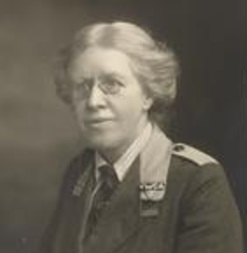
Hon. Emily Kinnaird CBE or Emily Cecilia Kinnaird was an English missionary and writer. She was active for the Young Women's Christian Association and she had a long association with India.
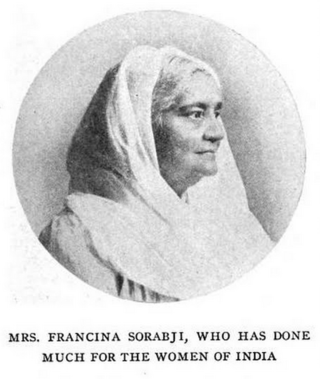
Francina Ford Sorabji was an Indian educator.

Alice Maude Sorabji Pennell OBE was an Indian physician and writer. She was the daughter and wife of Christian missionaries, and the first woman in India to earn a bachelor of science degree.

Dwarkanath Gangopadhyay was a Brahmo reformer in Bengal, British India. He made substantial contributions towards societal enlightenment and the emancipation of women. Ganguly dedicated his life to the latter cause, encouraging women to participate in politics and the social services. He was the husband of the first female Indian physician, Kadambini Ganguly.
Susila Anita Bonnerjee was a medical doctor, educator and suffragist who advocated for women's education and health in England and India in the late 1800s.
















